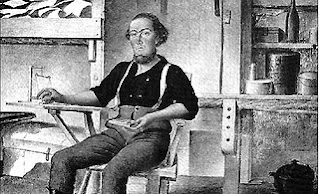What is: a Kiva
A striking feature of any Ancestral Puebloan (Anasazi) ruin, such as Mesa Verde, Chaco Canyon or elsewhere are large subterranean pit-like structures that appeared to have some ritualistic use. Usually round, though sometimes square, most often submerged, or partially submerged below ground level, these spaces contain a fire-pit, a small ritual opening in the floor known as a sipapu, and an air-flow system to bring air to the fire and lift smoke out. When Ancestral Puebloans left their cliff homes and took to dwelling on mesas, they took this feature of their architecture with them.
The room is known as a kiva and was used as a sacred space for tribal ceremonies and meetings. The small opening in the floor, known as a sipapu after a Hopi loan word, represents the connection between the human world and the spirit realm. Hopi tradition states that the first humans entered the world through an opening in the earth similar to a sipapu. Some kivas were part of ornate building complexes. In addition to the submerged chamber were a series of rooms above ground, either living or storage quarters. The ratio of kivas to living space in many ruins, such as Mesa Verde, is quite high, indicating that kivas played an important part in the daily lives of the people. Today, the best places to see these chambers are reconstructions, such as at Mesa Verde in Colorado, or Aztec Ruins National Monument in New Mexico. Modern-day Puebloan cultures, such as the Hopi, almost never open their kivas to outsiders.
The room is known as a kiva and was used as a sacred space for tribal ceremonies and meetings. The small opening in the floor, known as a sipapu after a Hopi loan word, represents the connection between the human world and the spirit realm. Hopi tradition states that the first humans entered the world through an opening in the earth similar to a sipapu. Some kivas were part of ornate building complexes. In addition to the submerged chamber were a series of rooms above ground, either living or storage quarters. The ratio of kivas to living space in many ruins, such as Mesa Verde, is quite high, indicating that kivas played an important part in the daily lives of the people. Today, the best places to see these chambers are reconstructions, such as at Mesa Verde in Colorado, or Aztec Ruins National Monument in New Mexico. Modern-day Puebloan cultures, such as the Hopi, almost never open their kivas to outsiders.




Comments
Post a Comment